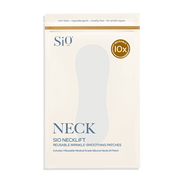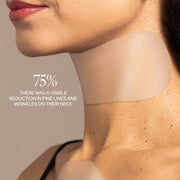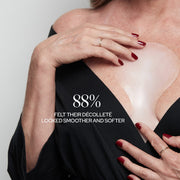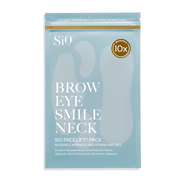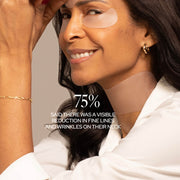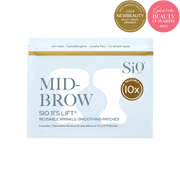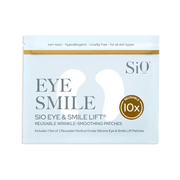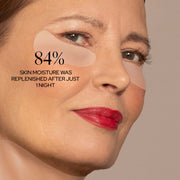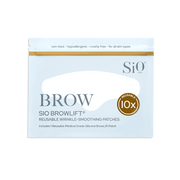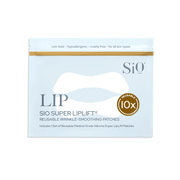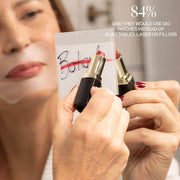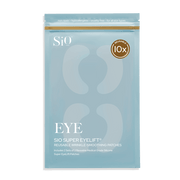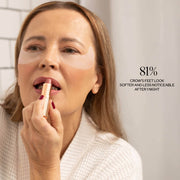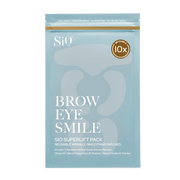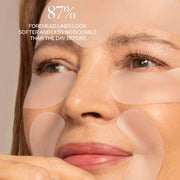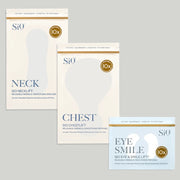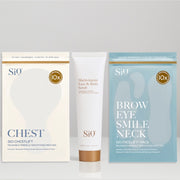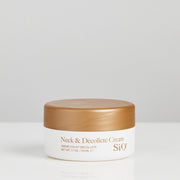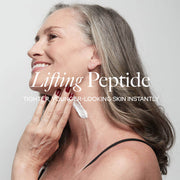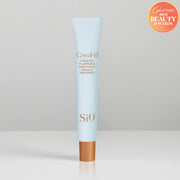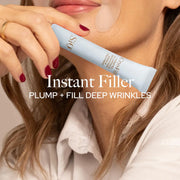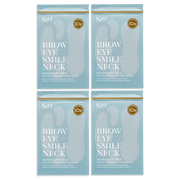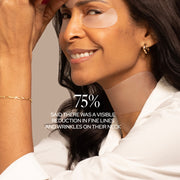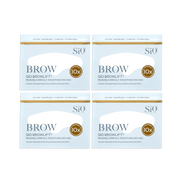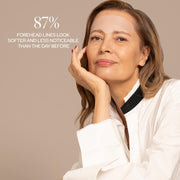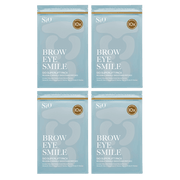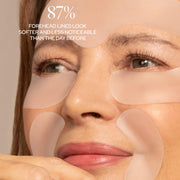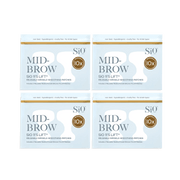What Causes Crepey Skin And How To Fix It

Originally published January 21, 2020, updated August 9, 2024.
Crepey skin is a common side effect of aging, so while time isn’t on your side, prevention and treatment measures can help firm your skin and reduce the loose, puckered appearance. There are plenty of options for treating crepey skin, both in and out of the dermatologist’s office.
What Is Crepey Skin?
Crepey skin is a term used to describe thin, fragile skin that has the appearance of finely wrinkled crepe paper. The skin may feel puckered and loose or appear saggy. Unlike deeper wrinkles and folds, crepey skin usually covers a large area like the inner upper arms, legs or décolletage, but it also commonly shows up under the eyes. Crepey skin commonly appears once you’re into your 40’s, although the condition can impact individuals as early as in their 20’s, depending on genetic and lifestyle factors.
What Causes Crepey Skin?
Generally speaking, crepey skin occurs due to collagen depletion as we age. Loss of collagen over time is normal, but the speed by which we lose it is somewhat influenced by our lifestyle.
The most common cause of crepey skin is sun damage from excessive sun exposure, but other behaviors like smoking and drinking alcohol can accelerate the reduction of collagen production and elastin, the protein in our skin that normally keeps it smooth and taut. Other behaviors like significant weight loss can also result in loose and crepe-like skin.
Additionally, the natural aging process and genetics play an overall role in the appearance of our skin. As we age, and as we experience associated hormonal changes, our skin becomes drier as a result of decreased oil production. Drier skin is more prone to stretching and sagging, resulting in wrinkles or a crepey texture and appearance.
How to Prevent Crepey Skin
We may sound like a broken record, but the best ways to proactively prevent crepey skin actually overlap with the common behaviors associated with living a healthy lifestyle. Here are a few tips to keep in mind as you think about your overall health and beauty routine.
- Protect your skin from the sun
Avoid overexposure to the sun as much as possible. When you are in the sun, make sure to protect your skin daily by wearing sunscreen with an SPF of at least 30 and protective apparel like sun-blocking fabrics and a hat.
- Maintain a balanced diet
Eating specific foods or taking supplements won’t immediately change the appearance of your skin. But it’s true that wellness starts from within so maintaining a balanced diet over time can help support collagen production over the years. Look for colorful fruits and vegetables full of antioxidants and vitamin C, as well as proteins containing omega-3 fatty acids like salmon, eggs, lean meats and lentils.
- Hydrate inside and out
Drinking enough water is key to overall hydration, including hydration of your skin. Additionally, you should regularly moisturize your skin with a body cream or lotion designed to protect your skin’s natural moisture barrier. SiO’s Cryo Body Cream can help keep your skin firm–93% of users agreed that their skin looked and felt moisturized after use.
How to Get Rid of Crepey Skin
Here are some stellar actions you can take to reduce the appearance of crepey skin—both topical and professional treatments.
- Apply products with moisturizing and firming ingredients
A lot of skincare products claim to be “anti-aging,” “firming,” or “smoothing.” With so many choices, how do you know what will actually work? In a moisturizer, you want to look for emollient ingredients like glycerin, olive oil, coconut oil, cocoa butter, and shea butter—as well as phytonutrients like ginseng, cinnamon, and dill extracts, which have all demonstrated an ability to smooth and improve elasticity.
- Use hydrating masks and beauty patches
In addition to your daily routine, it’s never a bad idea to supplement with a weekly or twice-weekly moisture mask. You can always DIY a yogurt and honey mask or avocado and egg white mask, both of which are excellent choices full of humectant and healthy acidic properties—but sometimes you’re not in the mood to whip something up or risk dripping breakfast ingredients onto your couch.
We love the ease and convenience of a reusable silicone patch, which you can stick on to treat the skin across your face, décolletage, or anywhere that crepiness strikes. You can even put them on before bed and allow them to work their magic while you sleep. They hug the skin surface, flattening fine lines and locking in moisture, so you can see and feel a major difference in texture and hydration. SiO Beauty makes a wide range of patches to fit just about every area affected by loose, wrinkled skin.
- Treat with serums containing antioxidants
Antioxidants are natural compounds that block or delay cell damage by removing harmful waste particles, known as free radicals, from our cells. Free radicals can come from pollution, smoking, UV rays, or other toxins, and they wreak havoc on our skin, causing premature aging in the form of loose skin, wrinkles, and even hyperpigmentation. But antioxidant ingredients like vitamin C, vitamin E, selenium, lutein, and lycopene can all help to neutralize free radicals, strengthening the skin’s protective barrier and diminishing the appearance of fine lines and puckered texture.
- Try red light therapy
Red light therapy (RLT), also known as low-level light therapy (LLLT), has long been a popular treatment and alternative to painful laser procedures when it comes to wrinkles and skin firming, and it’s performed quite well in studies. In contrast with lasers, RLT doesn’t cause painful damage to the skin surface, instead gently penetrating through to the deeper layers of the skin to repair from the inside out. For common skin texture issues, you can even buy your own at-home device to fight crepiness on the regular.
Natural Treatments for Crepey Skin
You don’t have to drop major cash or waste hours at the beauty store and dermatologist’s office to experience smooth, firm skin. Nature offers some of the best remedies out there to both treat and prevent crepey skin. And the best part? You can enjoy them from the comfort of your own home.
Plant-Based Oils
Just cut to the chase. Get your hands on all-natural, skin-smoothing oils in their purest form. Olive oil, coconut oil, cocoa butter, and shea butter can all work well on both the face and body, although if you’re acne-prone, it’s worth doing a patch test first, just to be safe.
Sugar Scrubs
A homemade sugar scrub is an effective and gentle physical exfoliant that you can easily make at home by combining two parts granulated sugar with one part oil of your choice (we love avocado, olive, or coconut). Exfoliating not only physically removes the top layer of dry skin, but it also increases blood flow and promotes cell turnover, which translates to a creamy, soft, polished skin surface.
Coffee Masks
Caffeine has exhibited significant antioxidant properties that help protect against photoaging caused by UV radiation as well as encourage the microcirculation of blood in the skin. Coffee grounds specifically may help to slow the decrease of collagen production that we naturally experience as we age, keeping crepey skin at bay.
To reap the benefits of a coffee face mask, mix ¼ teaspoon of finely ground spent coffee grounds with one tablespoon of plain yogurt (yogurt contains lactic acid, another skin hero that both brightens and exfoliates). Gently massage the mixture into your face, neck, or anywhere else in need of a tune-up, and leave on for five minutes before rinsing thoroughly with warm water.
The Last Word
Whether your crepey skin stems from dryness, sun exposure, bad habits, or the normal effects of aging, it’s not too late to push pause. You may prefer to leave it to the professionals, or maybe you’d rather take matters into your own hands. But moisture masks, exfoliating scrubs, injectable fillers, and light therapy are just a handful of solutions that can help you ditch that crepey skin for good.


